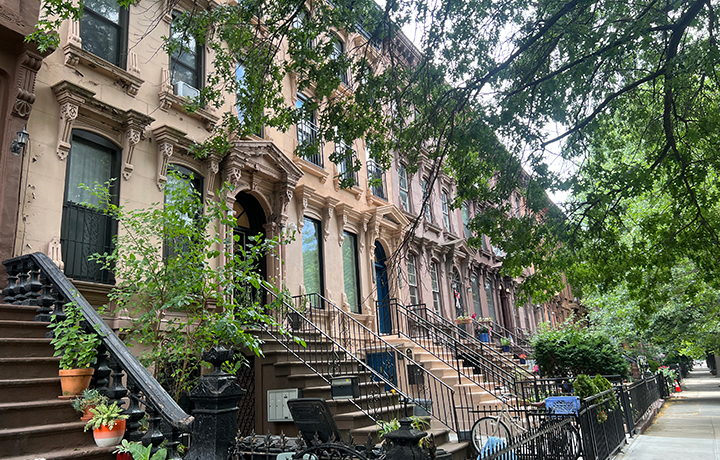A historical preservation nonprofit has found Mayor Adams to have overseen the fewest number of landmark designations per year since the city created the Landmarks Preservation Commission.
Village Preservation, the Greenwich Village-based nonprofit, authored what it believes to be a first-of-its-kind report on the city’s historical landmarking process that analyzed all 38,000 properties that have been landmarked in New York City since the establishment of the city’s Landmarks Preservation Commission.
Under Adams, the agency has completed an average of 10 designations per year — less than one-third that of the average of his mayoral predecessors, according to the report.
“This really for the first time in indisputable numbers shows that the level of activity has just changed in a way that’s fairly unprecedented in the history of the Commission,” said Andrew Berman, executive director of Village Preservation. “Unless the course is changed, we are going to have a dramatically different approach to preserving our city’s history.”
A Landmarks Preservation Commission spokesperson said that the agency’s goal under Adams has been to safeguard historic resources not just in Lower Manhattan but across all five boroughs, with new landmark sites that include the Bronx Opera House, Old Croton Aqueduct Walk, Staten Island’s Frederick Douglass Memorial Park and the John Birks “Dizzy” Gillespie Residence in Queens.
“We are tremendously proud of the quality of the landmarks designated under the Adams administration, which reflect our commitment to equity and ensuring designations tell the story of all New Yorkers,” the spokesperson in a statement.
In 2021 under former Mayor de Blasio, the board committed to an “equity framework” that takes account of geographic and cultural diversity. The report shows that this initiative has boosted the proportion of designations that the outer boroughs and Upper Manhattan have received, but shows that the total number of designations per year has shrunk so much that these areas are still getting fewer overall designations than the 56-year period before the equity framework was adopted.
While the report concludes that each mayor has considerable influence over the productivity of the Landmarks Commission, it also acknowledges regulatory changes that have limited the commission under the past two mayors.
In 2016, the City Council passed Intro. 775-A in 2016, a law that placed time restrictions on how long the Landmarks Preservation Commission could take to consider sites for designation, which Village Preservation blames for having “a chilling effect” on the number of designations that Landmarks Commission is willing to consider.
Berman said that he wasn’t aware of the city actually hitting the time limit set by the law and dropping any designations, but he said it’s prevented them from taking as many designations up in the first place.
“What it’s done is it’s discouraged them from taking on proposed designations that might engender more pushback, more controversy or require more work because it’s complicated or comprehensive,” he said.
Former Mayor de Blasio also governed under this law for more than half of his tenure, but the report found that the average number of buildings designated under him per year was more than four times the number under Mayor Adams so far.
Berman insisted that mayors have overarching power over the Landmarks Commission because they decide who to appoint at the head of the agency and they direct the commissioner on how to approach their responsibilities. The current LPC Commissioner and Chair Sarah Carroll was first appointed by de Blasio in 2018, and was reappointed by Mayor Eric Adams in 2022.
“The chair is the one who decides what gets considered for landmark designation and what doesn’t. The other 10 members of the commission then get to vote on whatever they’ve been presented with,” Berman said.
As the rate of designations has dropped, the report concluded that the city has increasingly avoided consideration of endangered historic sites, which have “been lost or compromised” as a result. While there are always going to be differing opinions on what sites are the most important for the city to preserve, Berman’s response to the direction he hopes to see the city take in light of the report boiled down to a straightforward answer: consider more designations.
“That they recommit themselves to the mission of the commission, which is to recognize and preserve architecturally and culturally and historically significant nights sites in the city — and to do so vigorously,” he said.
Read More: https://www.amny.com/politics/



































